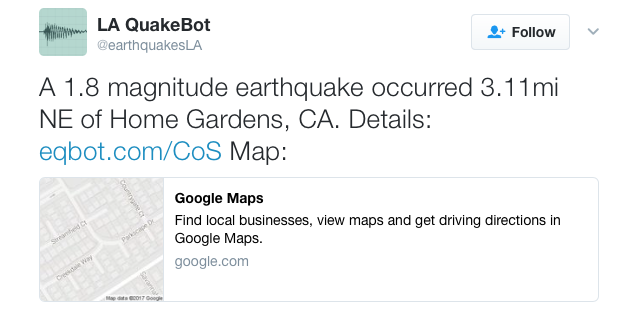
“Newsbots will contribute more than 90 percent of written articles within 15 years”,
Kristian Hammond, CTO and cofounder of Narrative Science.
From Associated Press and NPR to the LA Times and the Washington Post, automated reporting with news-writing bots has seen a stark rise in the past year. Those news-writing bots require high-quality data and the algorithms fit that data into a broader understanding of the subject matter. Technology has advanced rapidly and more than just baseball scores can now be reported on. New York Magazine’s Kevin Roose calls automated reporting “the best thing to happen to journalism in a long time.”
Below we highlight two case studies that were presented during the recent Big Data for Media Conference in London, organised by INMA and World News Media Network.
Case 1: Washington Post’s Heliograf AI tool helps journalists create faster and better stories
Heliograf is an AI powered bot that has been used by the Washington Post since last year. Heliograf is probably the most sophisticated use of artificial intelligence in journalism to date.
After a few months of development, Heliograf debuted last year. An early version autopublished stories on the Rio Olympics; a more advanced version, with a stronger editorial voice, was soon introduced to cover the election.
It works like this: Editors create narrative templates for the stories, including key phrases that account for a variety of potential outcomes (from “Republicans retained control of the House” to “Democrats regained control of the House”), and then they hook Heliograf up to any source of structured data—in the case of the election, the data clearinghouse VoteSmart.org.
The Heliograf software identifies the relevant data, matches it with the corresponding phrases in the template, merges them, and then publishes different versions across different platforms. The system can also alert reporters via Slack of any anomalies it finds in the data—for instance, wider margins than predicted—so they can investigate. “It’s just one more way to get a tip” on a potential scoop, Gilbert says.
The Post’s main goal with the project at this point is twofold. First: Grow its audience. Instead of targeting a big audience with a small number of labor-intensive human-written stories, Heliograf can target many small audiences with a huge number of automated stories about niche or local topics. There may not be a wide audience for stories about the race for the Iowa 4th, but there is some audience, and, with local news outlets floundering, the Post can tap it. “It’s the Bezos concept of the Everything Store,” says Shailesh Prakash, CIO and VP of digital product development at the Post. “But growing is where you need a machine to help you, because we can’t have that many humans. We’d go bankrupt.”
However, the Washington Post clearly has bigger ambitions than short, robot-written stories. Jeremy Gilbert, Director of Strategic Initiatives for the Post, wants to free up journalists to work on more interesting and complex stories.

Case 2: Associated Press producing automatically generated earnings reports with Automated Insights, beyond human capacity
The Associated Press is working together with automated insights (ai) on AI-powered content creation. AP is now able to produce 3,700 earning stories quarterly. That is 12 times more than their manual efforts without Wordsmith, the technology provided by ai. The previous challenge for AP reporters was to scrape through all those earning reports by public companies. They could only roughly write up 300 of those stories per quarter, leaving out thousands of others. At the same time, these business reporters could have used this valuable time on more topical issues. Or to put it in the crude words of TechCrunch writer Alex Wilhelm,
“Earnings season makes most reporters want to poke their eyes out with sharp objects.”
Other examples where publishers experiment with narrative bots and AI
The Post isn’t the first group to create machine-generated journalism. Narrative Science, a Chicago-based company started out by turning baseball box scores into stories, and now does earning reports and real estate listings.
- The Los Angeles Times is using Quakebot; a program that reports breaking news about earthquakes
- NPR had a reporter compete with a bot by Wordsmith to report the quarterly earnings of the diner chain Denny’s. (btw: the bot won)
- Wired had a bot write an obituary for the AI pioneer Marvin Minksy
Interested in digital publishing? Subscribe for a weekly newsletter on topics such as AI in media, paid content, and the future of news.
